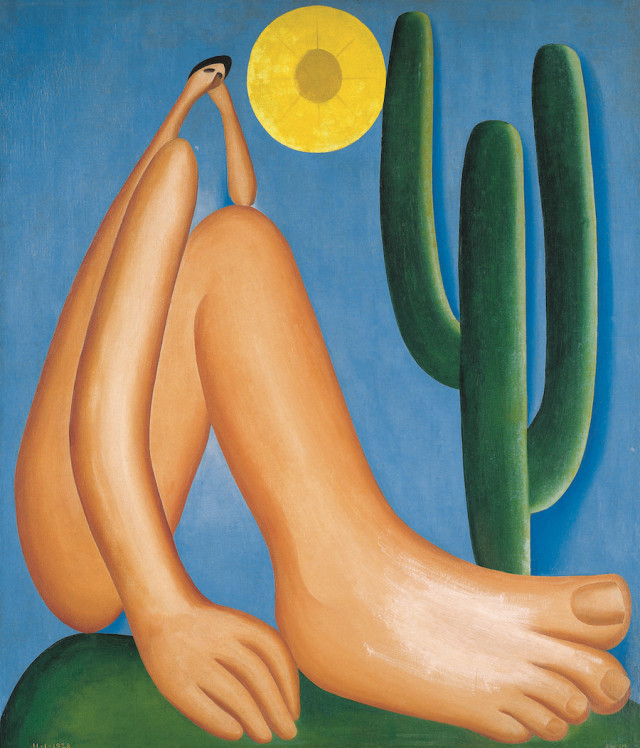Art & Exhibitions
In 1928, Tarsila do Amoral Launched Brazil’s New Art
THE DAILY PIC: In 1928, she tried to make art that spoke of the tropics.

THE DAILY PIC: In 1928, she tried to make art that spoke of the tropics.

Blake Gopnik

THE DAILY PIC (#1526): The most striking thing about the permanent collection at the MALBA museum of Latin American art, in Buenos Aires, is how easily most of its pieces could have been made anywhere in the European cultural sphere. That’s mostly a compliment – little of it feels out of touch or provincial – but also expresses my slight disappointment: To come so far, to see things I could mostly have seen at home.
This famous 1928 painting by the Brazilian Tarsila do Amaral, called Abaporu, was an exception. It really seemed to jump off the wall as something homegrown. It was made at just the moment when Tarsila and her husband Oswald de Andrade were coming up with the notion of cultural cannibalism, by which Brazilian art would devour the European, digest it fully and then shit out something entirely new.
The thing is, that very notion now seems very much part of the European ideas the couple were steeped in, from their time spent on the modernist Grand Tour.
I am more and more convinced that the entire game of modern art – the game of all fine art, in fact – is an utterly bizarre European invention that can only be played by European rules, because they are what define it and cause it to exist. By aspiring to make Brazilian art, all Tarsila can hope to do is change the accent her work speaks in.
There’s a detail in the picture that seems to acknowledge some of this. Tarsila depicts her cactus as casting a shadow on the blue behind it, as though the entire sky were a theatrical backdrop. That means that her “Brazilian” landscape isn’t a real view onto a truly different, “tropical” world that has devoured the Europe it came out of. It’s just the tropics as staged for European eyes.
For a full survey of past Daily Pics visit blakegopnik.com/archive.